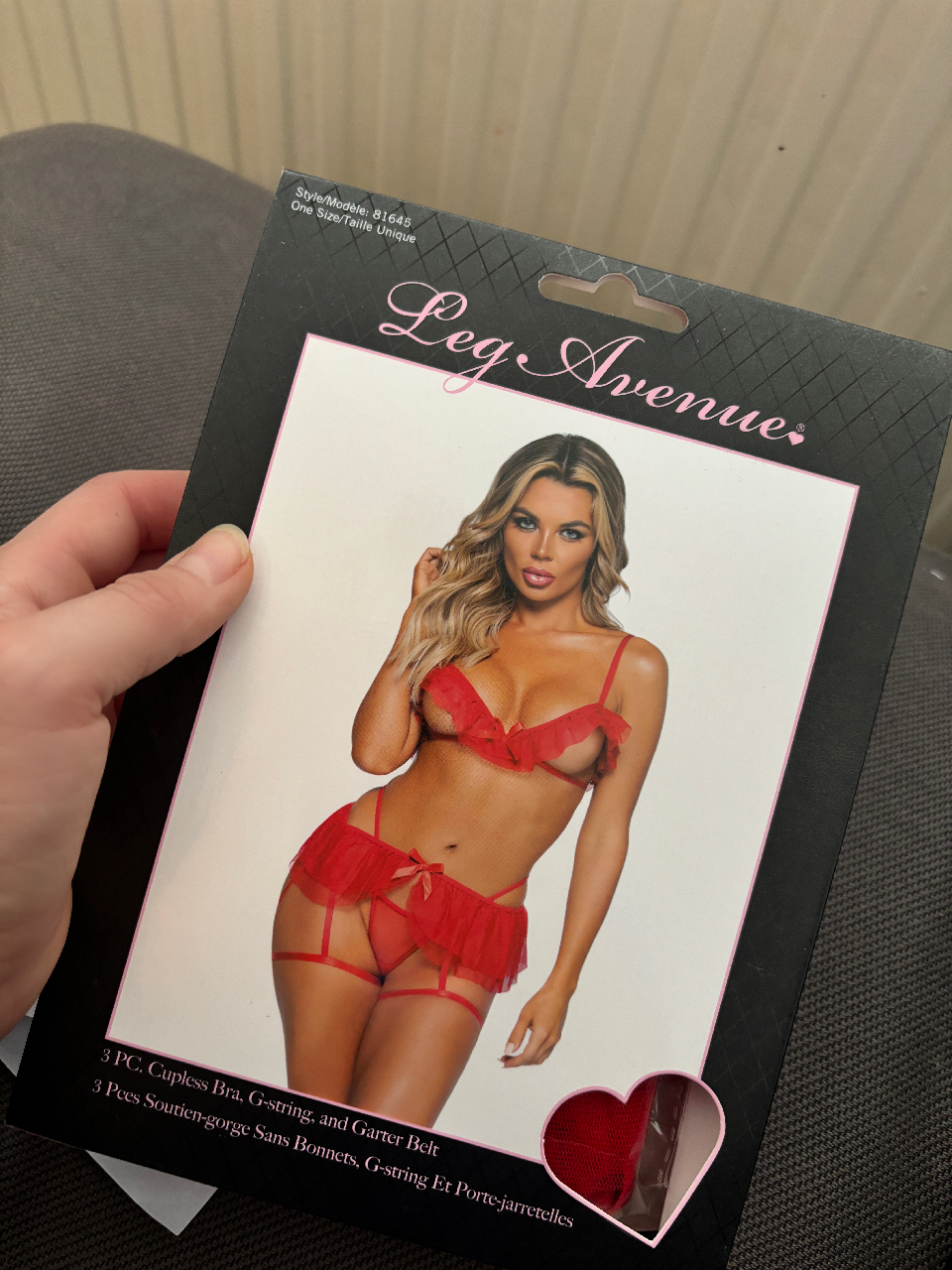Cuffing Season Explained: Why Relationships Heat Up In The Winter
1. Social Isolation and Cozy Atmosphere
As the temperatures drop and the weather becomes colder, people often find themselves seeking out physical intimacy and companionship to warm up their lives. This phenomenon is commonly referred to as “Cuffing Season,” a term used to describe the period of time around winter holidays when people tend to form intense relationships or “cuff” someone in an attempt to gain emotional support and comfort during the cold and often lonely months.
One major reason for Cuffing Season is social isolation. As the days get shorter and the weather gets colder, many people find themselves spending less time outdoors and more time indoors, away from friends and family. This can lead to feelings of loneliness and disconnection, making people more likely to seek out relationships as a way to combat these feelings.
Another factor that contributes to Cuffing Season is the cozy atmosphere that comes with winter. The cold weather outside often creates a sense of comfort and relaxation when indoors, and couples may use this opportunity to snuggle up together, share warm beverages, and enjoy each other’s company in a more intimate setting.
Cuffing relationships can take many forms, from casual dating to serious committed partnerships, but the underlying motivation is often the same: to find comfort and companionship during a time of year when it may be difficult to socialize and connect with others. While some people may view Cuffing Season as a necessary evil, others see it as an opportunity to form meaningful connections and build strong relationships.
2. Cold Weather and Physical Attraction

Cold weather brings about an increase in physical attraction, and this phenomenon has led to the creation of a term known as “Cuffing Season.” This season typically occurs between December and February, during which time people tend to seek out romantic relationships with the goal of finding a long-term partner. There are several reasons why cold weather sparks an uptick in cuffing: for one, it creates a sense of coziness and intimacy, making couples want to snuggle up together by the fireplace or on a plush couch.
Additionally, the cold weather often forces people to stay indoors more frequently, leading to increased interaction with their partners. This proximity can foster a deeper emotional connection between the two individuals, causing them to feel more attracted to each other. Furthermore, the holiday season brings about a sense of excitement and celebration, which can also contribute to the desire for romance.
It’s worth noting that Cuffing Season is not exclusive to romantic relationships; some people may also engage in “cuffing” with friends or acquaintances, seeking comfort and companionship during the cold winter months. However, when it comes to romantic relationships, cuffing is often seen as a way to find a partner for the new year.
3. Holiday and Special Event Planning
Holiday season is upon us, bringing with it a flurry of festive gatherings, icy weather, and cozy nights spent indoors with loved ones. It’s no wonder that this time of year often marks the beginning of “Cuffing Season” – a colloquialism coined to describe the phenomenon where people seek out romantic relationships in order to avoid the cold solitude that can come with the winter months.
As we settle into our favorite holiday traditions, many of us find ourselves feeling a surge in attraction towards others. Whether it’s the warmth and comfort of being surrounded by loved ones or the excitement of meeting new people at social gatherings, there’s something about this time of year that can bring people together like no other.
But what drives this trend? For many, Cuffing Season is a practical response to the harsh winter weather. With shorter days and longer nights, it can be easy to feel isolated and disconnected from the world around us. By finding someone to share the experience with, we can turn a potentially lonely time into a opportunity for connection and intimacy.
Additionally, the holiday season often brings with it a sense of nostalgia and sentimentality. We find ourselves reminiscing about Christmases past, memories of special moments with family and friends, and the joy of giving and receiving gifts. This collective sentiment can create a warm and fuzzy feeling that’s hard to resist, making it easier for people to let their guards down and connect on a deeper level.
Of course, Cuffing Season is also not without its downsides. The pressure to find someone special during this time of year can lead to feelings of anxiety and stress, particularly for those who are single or struggling with social anxiety. And let’s be real – sometimes, all it takes is a little bit of holiday magic to convince us that we’re ready to settle down.
As the year draws to a close, we’re reminded that relationships can take many forms and can be nourished in ways both big and small. Whether you find yourself swept up in the romance of Cuffing Season or simply enjoy the company of loved ones around the holiday table, there’s no denying the power of human connection to bring us joy and warmth.
1. Serotonin Levels and Emotional Connection
During Cuffing Season, which typically occurs during the winter months, people tend to seek out romantic relationships more frequently than usual. But what drives this phenomenon? One key factor is the impact of serotonin levels on our emotional connection with others. Research has shown that serotonin, a neurotransmitter often referred to as the “happiness hormone,” plays a significant role in regulating mood, appetite, and social behavior.
When serotonin levels are higher, we tend to feel more relaxed and open to social interaction, which can increase the chances of forming new connections. Conversely, lower serotonin levels have been linked to feelings of anxiety, depression, and irritability. As a result, people may be more drawn to others during Cuffing Season in order to boost their mood and serotonin levels.
In this context, emotional connection becomes a vital factor. People tend to seek out relationships that provide a sense of comfort, security, and validation, which can be particularly appealing during the cold and dark winter months. By forming strong bonds with others, individuals may experience a temporary increase in serotonin levels, leading to feelings of happiness and well-being.
2. Testosterone and Physical Attraction
The winter months bring about a unique phenomenon where individuals, often singles, seek out temporary romantic relationships as a means of comfort and companionship during the cold and dark season. This period, commonly referred to as “Cuffing Season,” is characterized by an increase in intimate relationships that tend to be less committed and more casual than those formed at other times of the year.
One factor contributing to Cuffing Season is the hormonal shift that occurs during the winter months. The reduced sunlight exposure leads to a decrease in testosterone levels, which can affect an individual’s libido and desire for social interaction. However, this drop in testosterone also triggers a surge in oxytocin, often referred to as the “cuddle hormone,” which promotes feelings of attachment and intimacy.
Physical attraction plays a significant role in Cuffing Season. The winter months bring about changes in body shape and appearance due to weight gain from increased calorie intake and decreased physical activity. This shift can lead individuals to seek out partners who can provide comfort and validation during this time. Furthermore, the colder weather encourages people to spend more time indoors, where they are more likely to interact with others through social events or shared activities.
Testosterone levels typically peak in late winter, around February or March, which can further fuel the desire for physical intimacy. As the season progresses and daylight hours begin to increase, individuals may experience a decline in testosterone levels, leading to a decrease in libido and a greater interest in more committed relationships. This natural fluctuation in hormones creates an ideal environment for Cuffing Season, as people seek out temporary escapes from the cold and darkness of winter.
3. Oxytocin and Bonding Hormones
Oxytocin, often referred to as the “cuddle hormone,” plays a significant role in bonding and attachment. It is released during physical touch, social interactions, and intimate moments, strengthening emotional connections between individuals.
The increase in oxytocin levels can be attributed to the cold weather, which may lead people to seek comfort and companionship in others. This surge in oxytocin can create a strong bond between two people, making them feel more affectionate and attached to each other.
In addition to oxytocin, other bonding hormones such as vasopressin, dopamine, and serotonin also come into play during Cuffing Season. Vasopressin is involved in pair-bonding and attachment, while dopamine releases pleasure and reward, making intimate interactions even more enjoyable. Serotonin helps regulate mood and emotions, promoting feelings of happiness and contentment.
1. Social Media Influences and Comparison
Cuffing Season, also known as winter flirting season, refers to the phenomenon where people engage in casual romantic relationships during the colder months of the year. This term has gained popularity on social media platforms such as Twitter and TikTok, with many users sharing their experiences and observations about this seasonal trend.
One reason why Cuffing Season is a significant topic of discussion on social media is that it highlights the complexities of modern relationships and the ways in which technology influences our interactions. Social Media Influences play a major role in shaping our perceptions of love, relationships, and sex. Platforms like Instagram and TikTok showcase curated and idealized representations of romance, often creating unrealistic expectations about what a healthy relationship should look like.
Furthermore, social media comparison can exacerbate feelings of inadequacy and low self-esteem, particularly during Cuffing Season when people are more likely to be comparing their own relationships to those of others. This can lead to increased anxiety and stress, which may cause some individuals to seek comfort in casual flings or “cuffing” relationships.
Additionally, social media influences the way we communicate with each other, often leading to a culture of superficiality and shallow interactions. In the context of Cuffing Season, this means that people may prioritize physical appearance over emotional connection or intellectual compatibility when engaging in casual relationships.
2. Romantic Commercials and Relationship Stereotypes
The arrival of winter brings about a peculiar phenomenon in the dating world – Cuffing Season. It’s a time when individuals, often singles, seek out romantic relationships primarily for comfort and companionship during the cold and dark months. This trend has become increasingly prominent in recent years, with many people embracing the idea of “cuffing” as a way to temporarily warm up their love lives.
One reason Cuffing Season exists is due to the influence of romantic commercials on our perception of relationships. These ads often portray idealized and passionate partnerships, creating unrealistic expectations for real-life couples. The notion that relationships should be dramatic, exciting, and all-consuming can lead people to seek out similar experiences, even if it’s just a casual fling.
Moreover, societal stereotypes about romantic love can contribute to Cuffing Season. The idea that men must prove their masculinity by wooing women during winter, or that women should be the ones doing the chasing, are common tropes in popular culture. These stereotypes often lead to unrealistic pressure on individuals to conform to certain roles, resulting in a surplus of “cuffing” activity during the colder months.
Another factor at play is the desire for comfort and security in relationships. As the weather becomes increasingly cold and dark, people may feel more inclined to seek out someone to share their warmth and light with. This can lead to a surge in “hookups” and casual relationships, as individuals look for ways to cozy up and feel safe during this time of year.
Ultimately, Cuffing Season highlights the complexities of human desire and connection. While it may seem counterintuitive to prioritize physical comfort over emotional intimacy, the truth is that people have different needs and desires at different times. By understanding and embracing these variations, we can work towards creating healthier and more fulfilling relationships that cater to individual preferences.
3. Generational Differences in Relationship Goals
The winter months bring about a unique set of relationship dynamics, particularly among younger generations. Research suggests that Gen Z and Millennials have distinct approach to relationships during this time.
For Gen Z, who are now entering adulthood, “cuffing season” is often associated with seeking comfort and security in the cold winter months. This generation prioritizes emotional connection and intimacy above all else, and views relationships as a means of escapism from the stresses of everyday life. As a result, they tend to focus on finding partners who can provide companionship and affection during the darkest time of the year.

In contrast, Millennials approach relationships with a more pragmatic mindset. For this generation, having a partner during cuffing season is seen as an opportunity to explore their emotional availability and compatibility before making long-term commitments. They prioritize independence and self-growth over emotional security, which can sometimes lead to more superficial connections during the winter months.
1. Emotional Attachment and Separation Anxiety
Emotional attachment plays a significant role in relationships, particularly during the winter months when people tend to seek comfort and security in each other’s company. When individuals become emotionally attached, they may experience feelings of excitement, euphoria, and a strong desire for closeness and intimacy.
Separation anxiety on the other hand is the opposite end of the spectrum. It occurs when someone feels an intense emotional distress or discomfort at the prospect of separating from their partner. This can be triggered by various factors such as the impending arrival of winter holidays, a decrease in daylight hours, or simply the prospect of being apart for extended periods.
As humans are naturally inclined to seek comfort and security during times of uncertainty, it’s not surprising that relationships often heat up during the winter months. The increased proximity and dependence on each other can create an intense emotional bond, making partners more affectionate and committed to one another. However, this heightened attachment can also lead to feelings of anxiety and insecurity, as individuals struggle to cope with the prospect of being apart from their loved ones.
The phenomenon of cuffing season has become increasingly popular culture-relevant in recent years, particularly among young adults. As people seek comfort and security during the cold winter months, they often turn to romantic relationships as a way to escape the harsh realities of everyday life. While this may not be a sustainable or healthy long-term solution, it’s undeniable that emotional attachment and separation anxiety play significant roles in shaping our interactions with others during this time of year.
Ultimately, understanding the psychological and emotional factors at play can help us navigate the complexities of relationships during cuffing season. By acknowledging the importance of emotional attachment and separation anxiety, we can approach these feelings with empathy and self-awareness, rather than trying to suppress or deny them.
2. Physical Intimacy and Relationship Status
Cuffing season, a term used to describe the phenomenon where people seek romantic relationships primarily for physical intimacy during the winter months, has become increasingly prevalent in modern society.
At the heart of cuffing season is the desire for physical intimacy, which often supersedes emotional connection and long-term commitment. This trend is particularly noticeable among young adults, who may be more focused on casual flings rather than building meaningful relationships.
Interestingly, research suggests that cuffing season is not unique to any particular relationship status. Both singles and couples are guilty of engaging in short-lived romances solely for physical gratification. However, it’s worth noting that the motivations behind these relationships can be different. Singles may seek companionship during a time when social calendars are lighter, while coupled individuals may experience a desire for excitement and variety after a period of monotony in their relationship.
Another factor contributing to cuffing season is the changing nature of dating culture. With the rise of swiping apps and online platforms, people are more accessible than ever before. This increased connectivity has led to an atmosphere where individuals can easily jump from one fling to another without feeling too much emotional attachment.
Ultimately, understanding the complexities behind cuffing season reveals a societal shift in values and expectations surrounding relationships. As we move forward, it’s essential to recognize that these relationships, though fleeting, are still legitimate expressions of human desire and connection.
3. Financial Involvement and Exploitation
Financial involvement and exploitation are two significant concerns during Cuffing Season, a period when people engage in casual relationships often fueled by the cold weather. As temperatures drop, individuals may seek comfort and companionship, leading to an increase in short-term relationships.
One common issue during Cuffing Season is financial exploitation. When one partner is more financially stable than the other, they may take advantage of this disparity, leading to an uneven distribution of resources. This can result in feelings of resentment and frustration for the less financially secure partner.
Another concern is the potential for emotional manipulation. In some cases, partners may use their financial influence to control or manipulate the relationship, exploiting their partner’s vulnerabilities. This can be particularly problematic if one partner has a history of emotionally abusive behavior.

Moreover, Cuffing Season can also lead to unequal power dynamics in relationships. When one partner is more invested emotionally and financially, they may feel pressure to provide for their partner or maintain the relationship, even if it’s not healthy or sustainable for them. This can lead to feelings of obligation and resentment.
It’s essential for individuals entering into Cuffing Season relationships to prioritize open communication, mutual respect, and clear boundaries. Establishing a fair distribution of resources and ensuring that both partners are comfortable with the arrangement can help prevent financial exploitation and promote healthier relationships.

1. Emotional Support and Comfort
Cuffing season, a colloquial term used to describe the phenomenon where people form intense relationships during the colder winter months, has sparked curiosity and debate among relationship enthusiasts.
At its core, cuffing season is rooted in human behavior, where individuals seek emotional support and comfort in the midst of harsh weather conditions. As the temperatures drop and days grow shorter, people tend to gravitate towards warm and cozy relationships.
The notion of cuffing season highlights the importance of intimacy and closeness during the winter months when social gatherings are limited, and outdoor activities become less appealing. It’s not just about finding a physical companion but also about seeking emotional connection and reassurance in an unpredictable environment.
This phenomenon can be attributed to various factors, including increased loneliness due to isolation from friends and family, and the desire for security and stability during a time of change. As people huddle indoors, they may seek comfort in the familiarity and warmth of a romantic relationship.
Furthermore, cuffing season also speaks to the human need for validation and affection. In the winter months, people may be more inclined to form deeper connections as a means of coping with the emotional isolation that often comes with shorter days and colder nights.
2. Physical Intimacy and Exploration
Cuffing Season is a colloquial term used to describe the period between Thanksgiving and Valentine’s Day, during which many people engage in casual, non-committal relationships often referred to as “cuffing” due to the idea of being “cuffed” or attached to someone temporarily.
This phenomenon is more than just a social phenomenon; it’s also deeply rooted in human psychology. In colder months, humans instinctively crave physical intimacy and companionship. As temperatures drop and days get shorter, our bodies release hormones like serotonin and dopamine that stimulate feelings of attachment and affection towards others.
One primary driver behind Cuffing Season is the desire for physical touch and warmth. Humans need to be close to other people, especially in the winter when cold weather can make us feel isolated and disconnected. This desire for physical intimacy often manifests as a deeper emotional connection or even a strong attraction towards someone.
As the winter months progress, the pressures of social obligations, holiday gatherings, and festive events create an environment where people are more inclined to seek comfort in relationships that offer a sense of security and companionship. This is particularly true for individuals who value having a partner during the holidays or those seeking reassurance through physical contact.
Furthermore, Cuffing Season highlights our fundamental need for human connection and attachment. In this era where social media presents curated highlight reels of other people’s lives, it can be difficult to maintain meaningful relationships. Cuffing Season serves as a necessary corrective to these feelings of loneliness, allowing us to temporarily fulfill our emotional needs through intimate connections with others.
3. Social Connections and Friendship Formation
During this period, people tend to seek out social connections and friendships, often through online dating apps and websites, as a means to cope with the cold weather and darkness of winter.
This phenomenon can be attributed to the psychological need for human connection and intimacy during the winter months when the days are short and the nights are long. As people spend more time indoors, they may feel a sense of isolation and disconnection from others.
The term “cuffing season” refers to the idea that people often form intense, physical relationships with others in order to find comfort and warmth during this time. These relationships can be romantic in nature, but also may involve friendships or platonic connections.
In an effort to establish a sense of security and stability, individuals may seek out partners who offer emotional support and companionship. This can manifest in the form of casual dating, online relationships, or even just socializing with acquaintances.
Buy Bodywand massagers for intense and soothing sensations at Peaches and Screams Buy suspender belts and garters for a sexy touch at Peaches and Screams Shop sexy clubwear for a bold and alluring look at Peaches and Screams Shop Kheper Games for fun and kinky products at Peaches and Screams Shop strapless strap-ons for hands-free pleasure at Peaches and Screams Shop premium hand-blown glass toys for elegant and luxurious play at Peaches and Screams
Cleveland Relationship Therapy Lace and Scotch I Like Corbyn But
- Exosome Therapy For Skin Rejuvenation Near Bramley, Surrey - May 9, 2025
- Dermal Fillers Near Thornton Heath, Surrey - May 8, 2025
- Jalupro Super Hydro Skin Booster Treatments Near Kempton Park, Surrey - May 8, 2025

